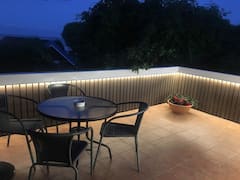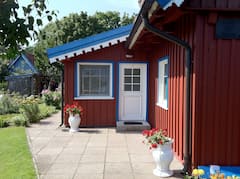The Curonian Spit is a 98 km (61 mi), narrow piece of land shared between Lithuania and Russia, and separates the Baltic Sea from the Curonian Lagoon. The Curonian Spit is composed of small settlements, mainly fishing villages, and abounds with natural beauty. Below, I’ll mention the larger towns found along the Curonian Spit and what you can do in each of the towns. Read on to learn about the incredible outdoor activities available on the Curonian Spit!
How to reach the Curonian Spit

The Curonian Spit is easily accessible via numerous ferry boats to and from the port city of Klaipeda, Lithuania. Depending on the season, ferry service links several places of the Curonian Spit to the Lithuanian mainland. More ferry service is available in summer (high season) than in winter. The ferry timetable can be found at the website linked at the end of the article.
Although a public bus is available along the length of the Curonian Spit, the timetables are limited and service is sporadic. In this instance, I’d suggest having access to your own transportation, in this case, either a car or a bike.
Smiltyne

Smiltyne is the northernmost settlement along the Curonian Spit and is linked directly to Klaipeda via a ferry. In Smiltyne, you can walk along the beautiful sandy beaches of the Baltic Sea or enjoy a hike through evergreen forests. Either way, the easy hikes around Smiltyne will see you off to a good start.
Juodkrante

Juodkrante is a small village in approximately the middle of the Lithuanian portion of the long Curonian Spit. The Hill of Witches is the main sight to see in Juodkrante and is as cool as it sounds. Set up in the 1980s, the Hill of Witches is host to numerous statues detailing Lithuanian folklore and mythological figures. Slightly a misnomer, during my visit I didn’t notice many witches, rather I enjoyed viewing the approximately 100 carved wooden statues that detailed the story of the mythological woman named Neringa. Depending on how fast you walk, you may want to allot 2 to 3 hours for an easy walk along this hilly area.
Also in Juodkrante, see Europe’s largest cormorant colony, which is a natural area where approximately 4,000 cormorants and 1,000 Grey Herons live.
You might be interested in these Airbnbs!
Nida

This old fishing village is probably the most well-known of all villages along the Curonian Spit. Additionally, it is home to several wonderful activities, and may be a perfect base for your exploration of the Curonian Spit. Here you’ll find a few hotels as well as a few restaurants (although only one restaurant was open at my time of visit in late October).
Being a fisherman’s village, Nida has beautiful wooden homes that are quintessential fisherman’s homes of Lithuania. The houses are colorful and mainly painted in red or brown. Many of the homes have detailed weathervanes and decorative eaves. Stroll through the quiet streets of Nida to see these houses, or visit the Fishermen Farmstead Museum to see the interior of one of these homes.
Also in Nida, visit the Parnidis Dune, which is one of the highest points of the Curonian Spit (52 m / 171 ft above sea level). The Parnidis Dune is a shifting dune, which means that the sands shift drastically with the wind (in the past, the shifting sands have covered entire villages). The dune allows for incredible views of miles and miles of sand and into the Russian portion of the Curonian Spit. The best time to visit the Parnidis Dune is at “golden hour,” the period shortly after sunrise or before sunset, for gorgeous lighting for photography.
You can also see the Lutheran church made from red brick (from 1888) and its surrounding cemetery, which is actually a bit eerie. Look for wooden grave markers, which are typical of this part of Lithuania.
Preparing for your trip
This UNESCO World Heritage Site remains relatively unknown, but abounds with natural beauty. I’d suggest visiting in early fall (late August to September) to avoid the crowds of summer, and the cold weather felt later in the season (October onwards).
The Curonian Spit is best explored by bike or with a rental car, which should be rented prior to your arrival on the Curonian Spit. To drive a car onto the Curonian Spit, you’ll be required to pay a small fee of 5 EUR (5.58 USD). Don’t worry about getting lost as there is only one main road that goes the length of the Curonian Spit. There is also only one gas station along the Curonian Spit, so don’t forget to fill up prior to your trip. The settlements along the Curonian Spit are small, so don’t expect a wide array of restaurants or high class accommodations; the Curonian Spit is best enjoyed for its stunning nature.
History
Get Trip101 in your inbox
Unsubscribe in one click. See our Privacy Policy for more information on how we use your data























Create an account to